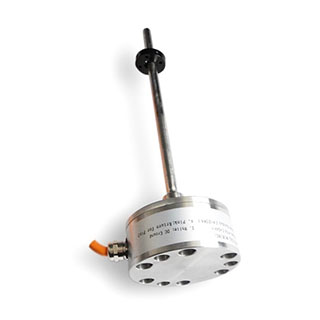What is Displacement Sensor?
Mon, Mar 29 by ATO.com
- Introduction to displacement sensor
Displacement sensor, also known as linear sensor, is a linear device belonging to metal induction. The function of the sensor is to convert various measured physical quantities into electricity. According to the different forms of the measured variable, the displacement sensor can be divided into two types: the analog type and the digital type. The former can also be divided into two types: the physical type and the structure type. Commonly used displacement sensors are mostly analog structures, including potentiometer type displacement sensors, inductive displacement sensors, self-aligning machine, capacitive displacement sensors, eddy current displacement sensors, and Hall-type displacement sensors.
- Characteristic parameters of displacement sensor
- Nominal resistance: The resistance indicated on the potentiometer.
- Repeatability: The smaller the parameter, the better.
- Resolution: The minimum displacement value that the displacement sensor can feedback. The smaller this parameter, the better. The resolution of the conductive plastic displacement sensor is infinitesimal.
- Allowable error: The percentage of the ratio of the difference between the nominal resistance and the actual resistance to the nominal resistance is called the resistance deviation, which represents the accuracy of the potentiometer. The allowable error generally meets the requirements as long as it is within ±20%, because the general displacement sensor is used in the way of partial pressure, and the size of the specific resistance has no effect on the data collection of the sensor.
- Linear accuracy: It means linearity error. The smaller this parameter, the better.
- Lifespan: Conductive plastic displacement sensors are more than 2 million times.

- The working principle of displacement sensor
Here we mainly introduce the working principles of the two most commonly used displacement sensors.
- Potentiometer type displacement sensor
The potentiometer type displacement sensor converts the mechanical displacement into a resistance or voltage output in a linear or arbitrary function relationship with the potentiometer element. Both ordinary linear potentiometers and circular potentiometers can be used as linear displacement and angular displacement sensors, respectively. However, potentiometers designed for the purpose of measuring displacement require a definite relationship between the displacement change and the resistance change. The movable brush of the potentiometer type displacement sensor is connected with the measured object.
The displacement of the object causes the resistance of the moving end of the potentiometer to change. The amount of change in resistance reflects the amount of displacement, and whether the resistance increases or decreases indicates the direction of displacement. Usually the power supply voltage is passed on the potentiometer to convert the resistance change into a voltage output.
The wire-wound potentiometer changes with the turn resistance as a ladder when the brush moves, and its output characteristics are also ladder-shaped. If this kind of displacement sensor is used as a displacement feedback element in a servo system, an excessive step voltage will cause the system to oscillate. Therefore, the resistance value of each turn should be reduced as much as possible in the production of the potentiometer.
The main disadvantage of the potentiometer sensor is that it is easy to wear. Its advantages are: simple structure, large output signal, convenient to use and low price. - Magnetostrictive displacement sensor
The magnetostrictive displacement sensor accurately detects the absolute position of the movable magnetic ring through non-contact measurement and control technology to measure the actual displacement value of the detected product. Due to the high precision and high reliability of the sensor, it has been widely used in thousands of actual cases.
Since the movable magnetic ring used to determine the position has no direct contact with the sensitive components, this type of displacement sensor is not easily affected by oil, solution, dust or other pollution. The IP protection level is above IP67, so it can be used in extremely harsh industrial environments.
The output signal of the sensor is an absolute displacement value, even if the power is interrupted or reconnected, the data will not be lost, and there is no need to reset to zero. Because the sensitive element is non-contact, even if the detection is repeated continuously, it will not cause any wear to the sensor, which can greatly improve the reliability and service life of the detection. For example, ATO’s 100mm magnetostrictive level sensor for servo cylinder has high precision, anti-interference performance and long life. It can achieve no temperature drift, and has excellent performance in high temperature resistance, corrosion resistance and high pressure resistance. Undoubtedly, It is extremely worth purchasing.
If you want to get more useful information, welcome to visit ATO's official website and select a suitable displacement sensor.

